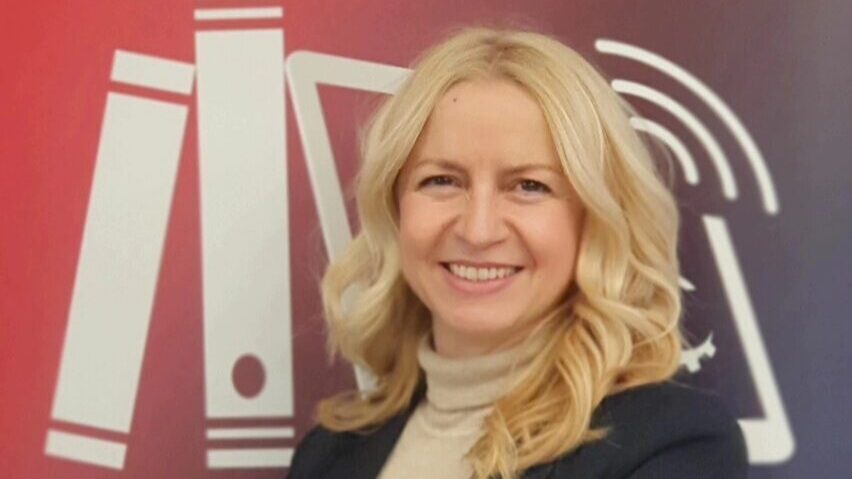In the current school year, 8,000 students in 150 high schools and 700 companies in Serbia are schooled using this educational format. So far, 53 workers’ profiles covering all economic sectors have been adjusted to be suitable for dual education.
Almost five years have passed since the adoption of the Law on Dual Education in Serbia. We talked to Mirjana Kovačević, Head of the Education, Dual Education and Education Policies Centre and Director of the Chamber of Commerce and Industry of Serbia’s Business Academy, about the results of dual education and whether the expectations have been met.

The first steps in the development of the dual education model were made in vocational high schools in Serbia in 2013. In the period until 2016, about 400 students studied for one of three workers’ profiles in 16 high schools and with the support of 40 companies. In the following years, the number of students, schools and companies involved in the dual education system has been constantly growing, so 8,000 students in 150 high schools and 700 companies in Serbia, in the current school year, are educated using this educational format. So far, 53 workers’ profiles (24 students studying a three-year and 29 a four-year programme), covering all economic sectors, have been adjusted to be suitable for dual education. Next school year, another 14 workers’ profiles will be added at the request of companies.
The Law on Dual Education, adopted in November 2017, stipulates the rights, obligations and responsibilities of all participants and determines the details related to using the dual education model in our country. In Serbia, the student does not work in a dual education system but learns through work, which means that the Labour Law does not apply to them. Rather, students are regulated by laws and all other legal regulations related to education. The student first enrols in school and then is assigned to an employer. The school is responsible for the part of the curriculum that is taught at school and an employer is responsible for teaching the other part of the curriculum.
Every company involved in dual education must be certified by the Chamber of Commerce and Industry of Serbia (CCIS). The certificate confirms that the company has met the conditions for performing learning through work for each workers’ profile for which it wants to conduct learning through work. The company must have trained instructors on site who will work directly with students – instructors are trained and licensed to conduct dual education by the Chamber of Commerce and Industry of Serbia (CCIS).
To implement a dual education model, a vocational school must be in the area in which the company is located. The mutual relationship between the school and the employer is regulated by the Dual Education Agreement, and the mutual relationship between the employer and the student, i.e. the parent or other legal representative of the student, is regulated by the Agreement on Learning through Work. The Law on Dual Education prescribes the obligatory elements that these agreements have to have, while contracting parties independently agree on other elements.
Dual education is implemented exclusively at the request of a company and it is voluntary and intended for employers who see it as a systematic way to solve the problem of lack of competent staff in the long run through their own investment in education.
Experiences in the implementation of the dual model in high schools have helped to implement the same model at the higher education level. On the back of that, the Law on the Dual Model of Studies in Higher Education was passed in 2019 which stipulates that higher education institutions can conclude contracts with employers that provide learning through work for students. Since October 2021, nine higher education institutions have started implementing a dual model of study, 32 curricula (for the textile, machinery, food, catering sectors, etc.) have been accredited, 150 students are studying in line with the dual model, and 75 companies participate in the implementation of the dual study model.
Are there any problems related to this process left that hinder the functioning of dual education?
As a rule, the implementation of dual education starts from production/technical workers’ profiles, because companies’ demand for those profiles is the strongest. That is why, in the beginning, it was important to eliminate prejudices and show that there have been changes in the status of crafting and technical occupations on the labour market, that is, that today these occupations are in demand, and for the most part, well paid. Furthermore, the conditions for doing these jobs are significantly different from what they used to be.
Also, the challenges that need to be addressed further include professional orientation of students in elementary schools, so that pupils choose a high school that they really want to attend, quality selection of students when assigning them to companies, better curricula with more hours spent on learning through work, the state supporting companies that participate in dual education, connecting micro- and small companies in training alliances that will help students to achieve all the outputs defined by the curriculum.

Why would companies get involved in dual education and how can we increase the number of interested companies?
The benefits of dual education for employers are manifold. Employers who train students in dual education will not need to allocate significant funds to train new workers, because they can choose future employees can choose from students who have already acquired the knowledge and skills by learning through work at the company’s facilities.
Also, more active engagement of employers in writing job descriptions as the first steps in preparing new qualification standards provides inputs to harmonize curricula with business-technological processes and generally puts the education process in the function of economic growth and development. Also, through dual education, employers can determine which young people are interested in training and more complex jobs. Of course, investing in education is the promotion of the company’s social responsibility.
Does the increased demand for workers in the labour market affect the increase in the number of companies applying for this programme?
Today we have a lack of qualified workforce for certain production occupations, high youth unemployment and brain drain which all makes it difficult for companies to keep up with the demands of the 4th industrial revolution and to be competitive on the international market.
Dual education harmonizes education and the needs of the labour market and facilitates employment after graduation.
Dual education is mostly implemented in the sectors such as metal processing and machine building (especially the automotive industry), food, textile, wood, construction, tourism and catering, commerce and transport (logistics and forwarding, air transport). Companies mostly need machinists/welders, industrial mechanics, machine operators, sales staff, cooks, waiters, mechatronics technicians, computer control technicians for CNC machines and vehicle repairmen.
In the 2022/2023 school year, 459 companies submitted 878 declarations of readiness to be involved in the dual education places and offered places for 3,600 students.
New ideas for improving dual education
In addition to the aforementioned training alliances, which should facilitate the involvement of micro- and small companies in greater numbers, the further development of dual education should take into account the current processes of digitalization and equip schools and companies with virtual classrooms. Also, the line ministry has initiated activities geared towards the development of regional training centres which, in line with the principle of public-private partnership, would help companies to teach curricula that cannot be taught in a real work environment due to work health and safety rules. It is necessary to improve and apply the principle of mobility through the educational system because that would significantly boost the appeal of workers’ profiles in dual educational profiles. The challenge will be to develop the concept of regulation in dual educational profiles, which is a kind of precursor to the development of models that exist in partner countries in this project (Austria, Switzerland, Germany), where students first conclude contracts with companies (assuming appropriate obligations) then enrol in high school.